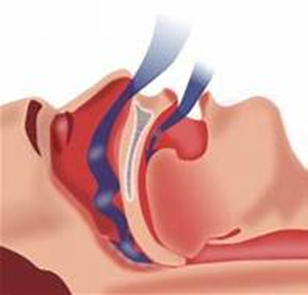The patient with a recent abdominal incision has an abdominal binder applied. The nurse explains that this appliance helps reduce pain by:.
supporting surface and internal tissues.
adding back support to enhance early ambulation.
increasing warmth to the incision site.
keeping sutures and staples in place.
The Correct Answer is A
The patient with a recent abdominal incision has an abdominal binder applied. The nurse explains that this appliance helps reduce pain by: The correct answer is choice A: supporting surface and internal tissues.
Choice A rationale:
An abdominal binder is primarily used to support surface and internal tissues. It provides gentle compression and support to the abdominal area, which can reduce pain and discomfort. By holding the incision site together and supporting the surrounding tissues, it can minimize movement and strain on the incision, helping to alleviate pain.
Choice B rationale:
While an abdominal binder may indirectly contribute to back support by stabilizing the abdominal area, its primary purpose is to support the surgical site. Enhancing early ambulation is more related to patient mobility and not the primary purpose of the binder.
Choice C rationale:
Abdominal binders do not increase warmth to the incision site. In fact, excessive warmth can lead to sweating and moisture, potentially increasing the risk of infection. The primary purpose is to provide support.
Choice D rationale:
An abdominal binder does not keep sutures and staples in place. The sutures and staples are used to secure the incision, and the binder is placed over them to provide support and compression. However, the binder itself is not responsible for keeping sutures and staples in place. .
Nursing Test Bank
Naxlex Comprehensive Predictor Exams
Related Questions
Correct Answer is D
Explanation
Choice A rationale:
Patient-controlled analgesia (PCA) is a method of pain management that allows the patient to administer their own pain medication within specified limits, but it doesn't reduce the workload of the nurse. The nurse is responsible for setting up and monitoring the PCA pump, educating the patient, assessing their pain, and ensuring safety. Therefore, this choice is incorrect.
Choice B rationale:
PCA does not completely eliminate pain. It provides the patient with control over their pain relief by allowing them to self-administer medication within preset limits. However, it does not guarantee the complete absence of pain. Pain relief is provided within a safe dosage range, but some level of pain may still be experienced. Therefore, this choice is incorrect.
Choice C rationale:
PCA does not eliminate the risk of adverse drug effects entirely. The nurse must monitor the patient for signs of adverse effects, such as respiratory depression or sedation. While the patient has control over medication administration, there are still risks associated with opioid analgesics. Therefore, this choice is incorrect.
Choice D rationale:
The principal advantage of using patient-controlled analgesia (PCA) is that it reduces patient anxiety about pain by giving the patient more control over its management. This choice is correct because PCA empowers the patient to self-administer pain medication when needed, which can lead to better pain control and reduced anxiety. The nurse sets safe dosage limits and monitors the patient, ensuring safety while providing a sense of control.
Correct Answer is C
Explanation
The correct answer is: C. Decreased energy.
Choice A reason: Hypotension is not typically associated with obstructive sleep apnea (OSA). OSA is more commonly linked with hypertension due to the frequent arousals during sleep that activate the sympathetic nervous system, leading to increased blood pressure.
Choice B reason: Pneumonia is an infection of the lungs and is not a direct consequence of OSA. While OSA can affect the respiratory system, it does not cause pneumonia. However, individuals with OSA may have a higher risk of respiratory infections due to compromised breathing during sleep.
Choice C reason: Decreased energy is a common symptom of OSA. People with OSA experience repeated episodes of partial or complete upper airway obstruction during sleep, leading to disrupted sleep patterns and insufficient rest. This results in daytime sleepiness and fatigue, which are hallmark signs of the condition.
Choice D reason: Thyroid disease, specifically hypothyroidism, can be associated with OSA, but it is not a direct finding of the condition. Hypothyroidism can lead to changes in the soft tissues of the upper airway and contribute to the development of OSA, but it is not a symptom used to diagnose OSA.

Whether you are a student looking to ace your exams or a practicing nurse seeking to enhance your expertise , our nursing education contents will empower you with the confidence and competence to make a difference in the lives of patients and become a respected leader in the healthcare field.
Visit Naxlex, invest in your future and unlock endless possibilities with our unparalleled nursing education contents today
Report Wrong Answer on the Current Question
Do you disagree with the answer? If yes, what is your expected answer? Explain.
Kindly be descriptive with the issue you are facing.
